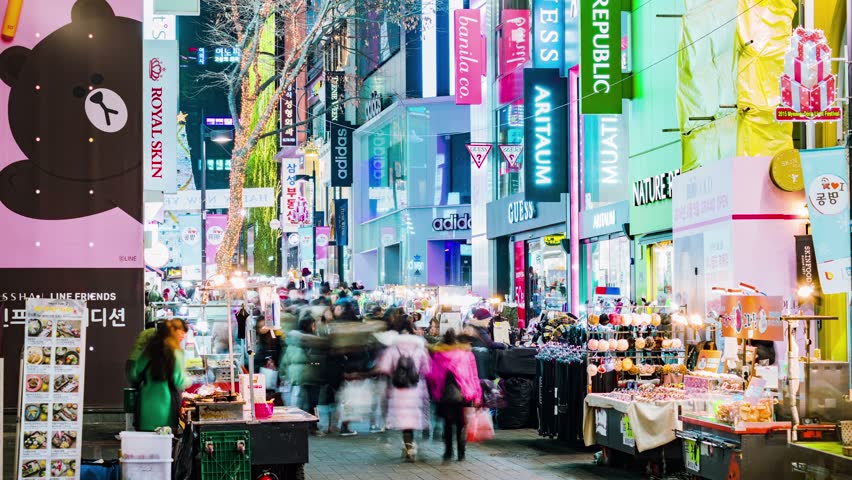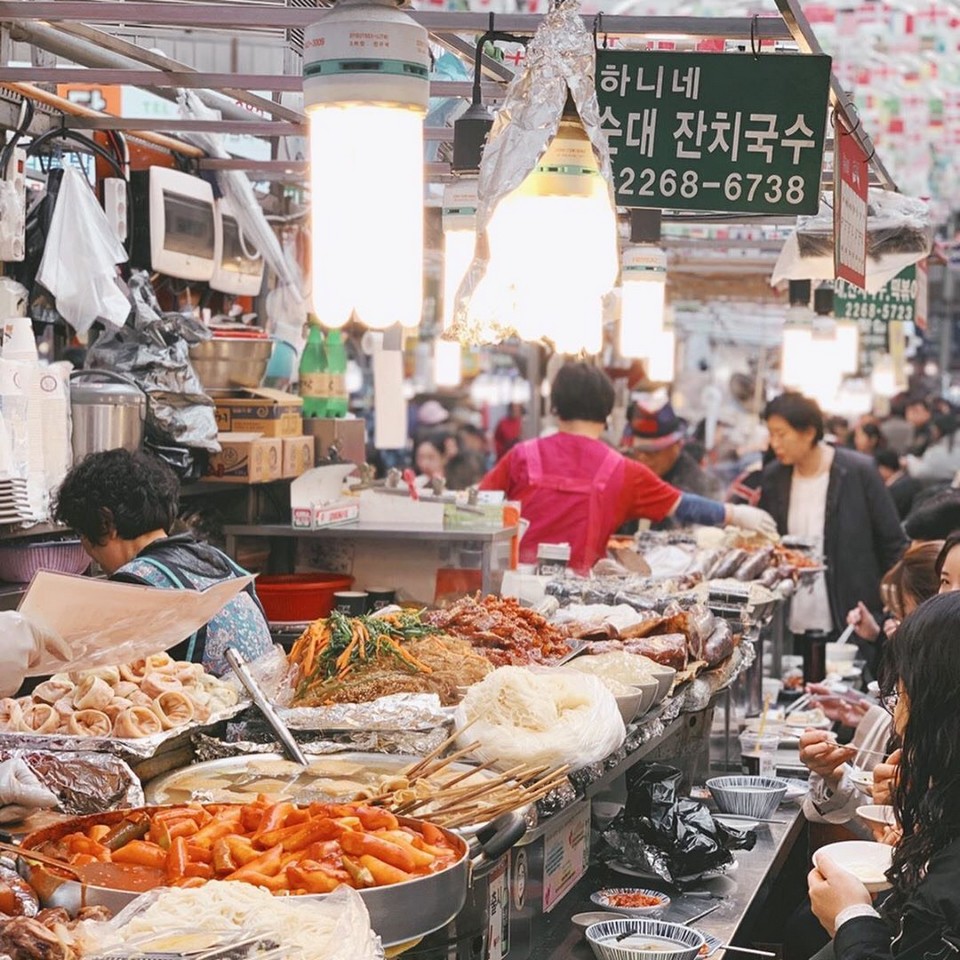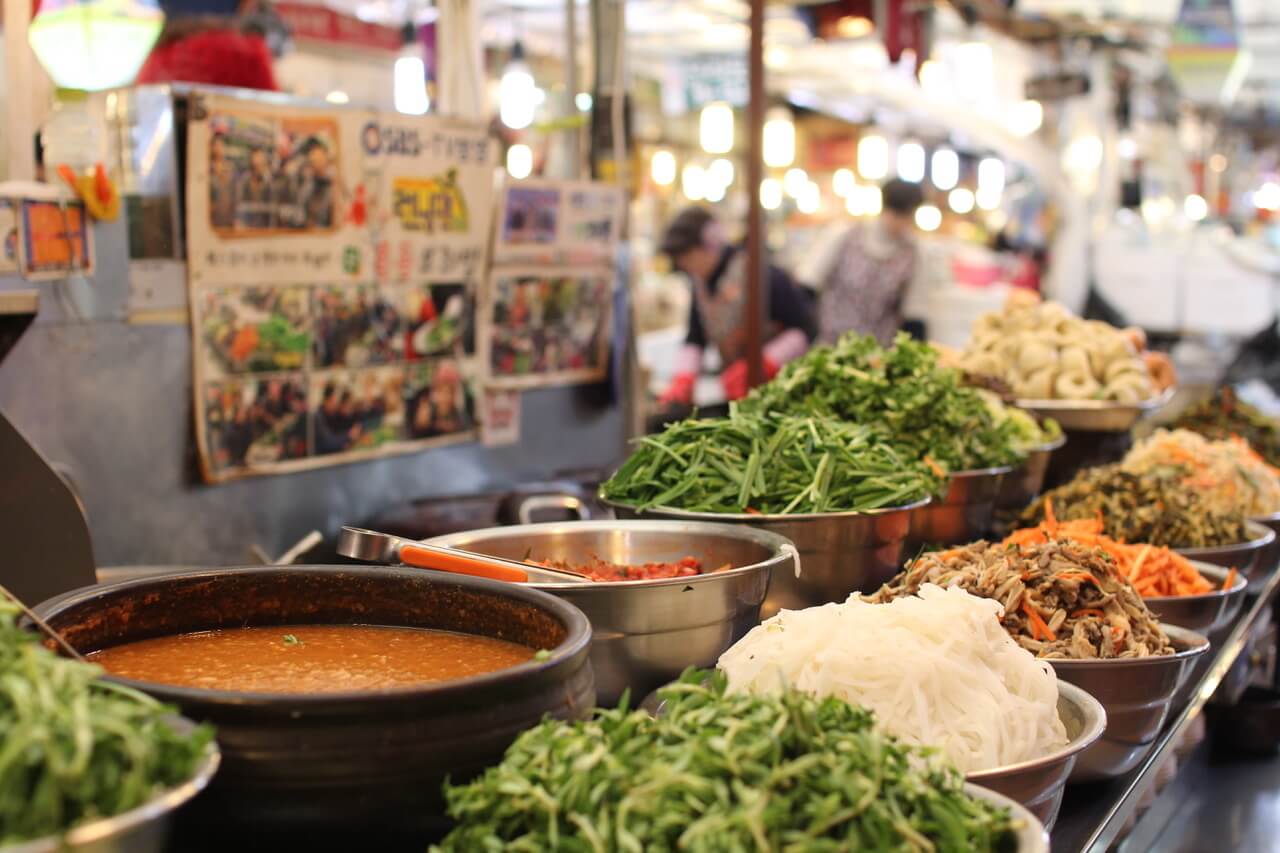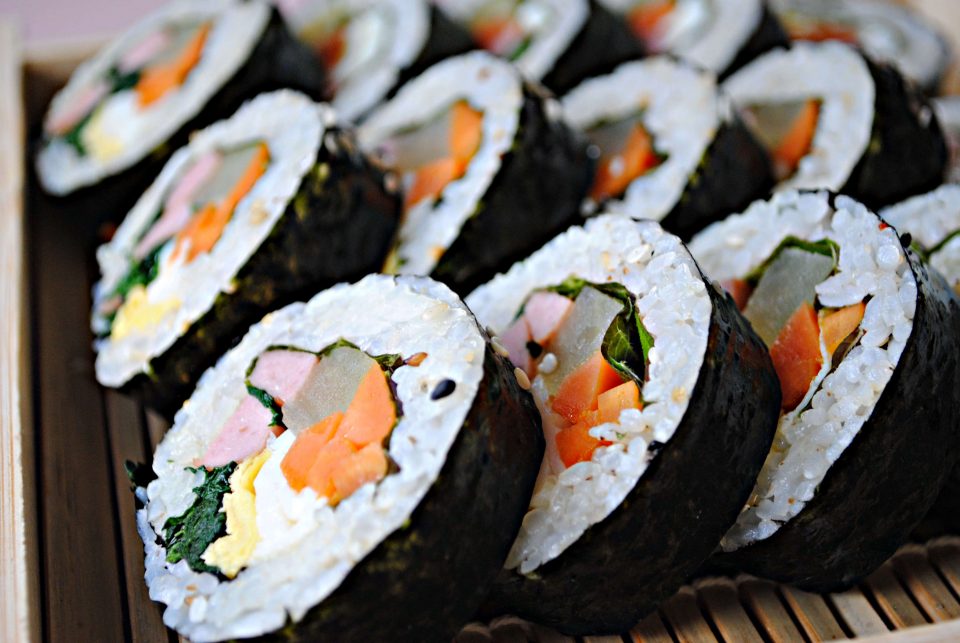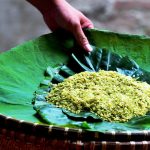Gwangjang market blog — What to eat at Gwangjang market Seoul, the street food paradise in Seoul?
If you enjoy Seoul’s street cuisine, Gwangjang Market is a must-see destination with a forest of tiny shops serving both street food and traditional Korean fare. This market is nearly entirely comprised of eateries that serve both order and set meals, such as gimbap, tteokbokki (Spicy rice cakes), soondae (Korean blood sausage), hotteok (Korean sweet pancakes), and so on. … tons of fresh seafood, notably sannakji (live octopus sashimi) with tentacles still wriggling on dish, which makes you feel uncomfortable just thinking about it! So, what should you eat in Gwangjang Market Seoul, one of the most popular and greatest locations to eat in Seoul? To discover out, read our Gwangjang market blog on how to spend one ideal day in Gwangjang Market Seoul to enjoy the street food paradise of Seoul (Gwangjang market cuisine).
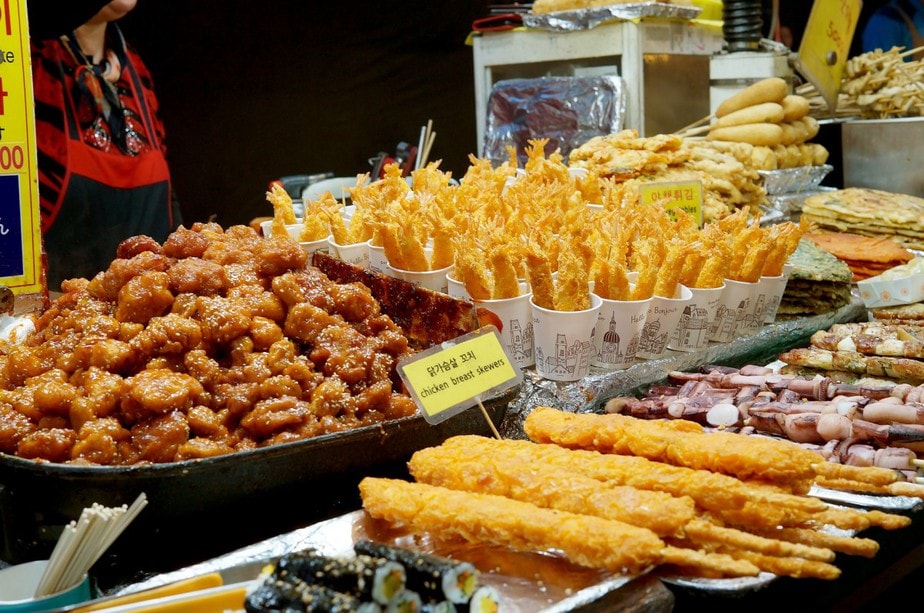
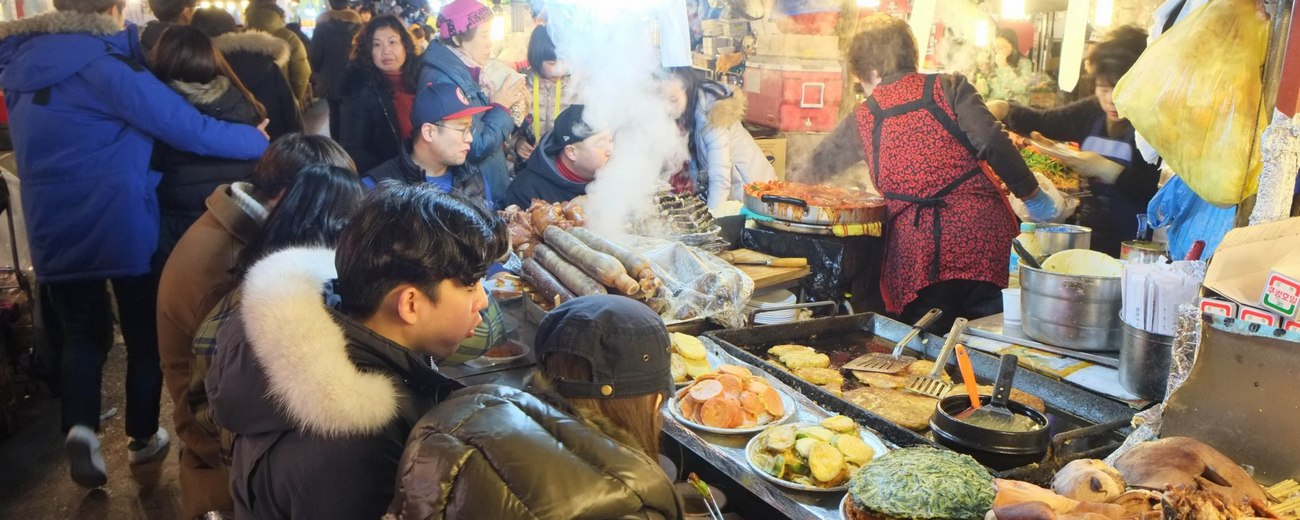
Gwangjang market blog: Overview of Gwangjang Market Seoul
Address: 88 Changgyeonggung-ro, Jongno 4(sa)-ga, Jongno-gu, Seoul, South Korea
Opened: 1905
Hours: 9AM–5PM, daily
Directions: Take the subway to Jongno 5-Ga station, Exit 8 or 9.
Gwangjang Market is one of the oldest markets in Seoul which was opened in 1905. All activities, sales and culture of the market have not changed much in the length of history.
The market’s entry gate is very broad from the main street, the inside is covered with arch roofs, and lights are switched on practically throughout the market. The booths and restaurants are equally spaced, much like the stalls and small eateries in Vietnamese markets, with the proprietor and a huge table in the center, with benches set around it for people to sit. The market reminded me of high school, when I had to ride my bicycle into the market after school and get some snacks with a group of friends, such as pork buns, pancakes, and a cup of sweets, before returning home!
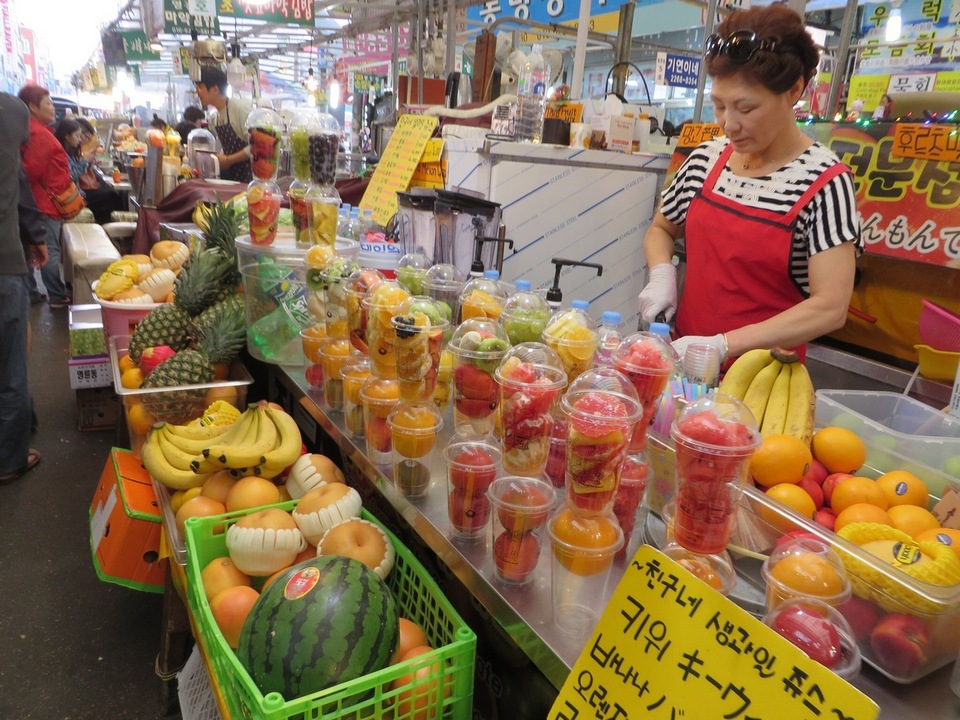
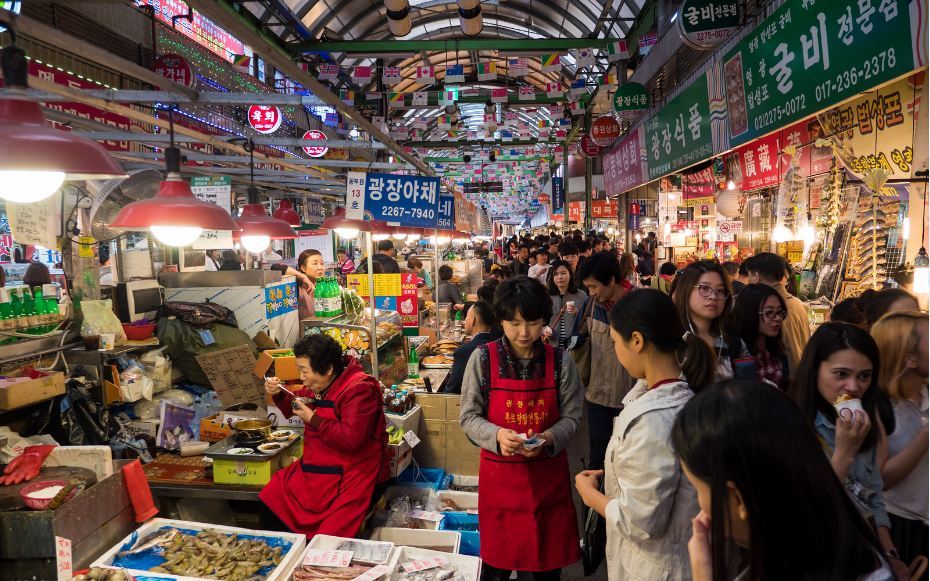
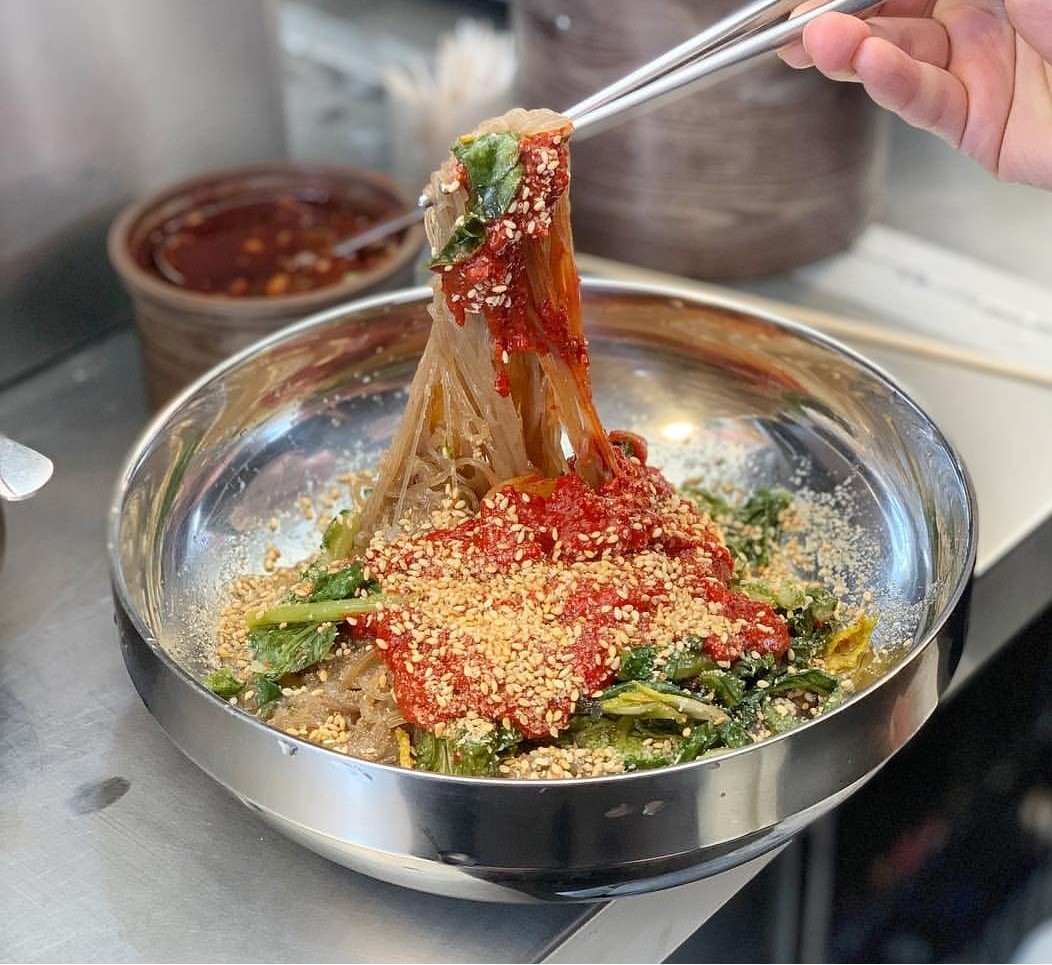

What to eat at Gwangjang market Seoul? Main dishes and the most are sold at Gwangjang market
The market includes a great variety of booths and eateries, however, the majority of them serve identical cuisines, which are also Gwangjang Market’s hallmark dishes and delicacies. The food on the table was quite a lot, of all types and quantities, stacked up and piled up. The following are the key courses:
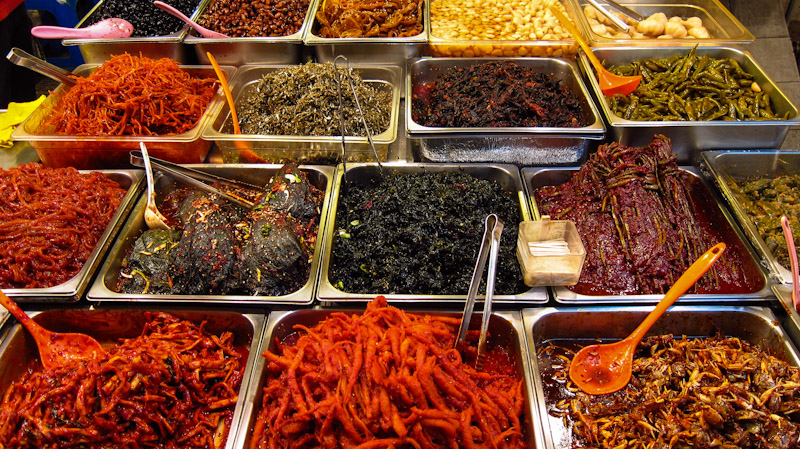

Gimbap (Korean Seaweed Rice Rolls): A famous Korean meal prepared with rice and different components such as veggies, eggs, and so on, all wrapped in dried seaweed leaves. The Gwangjang market is famed for Mayak gimbap, which are smaller than regular gimbap and have a lot more unique flavor.
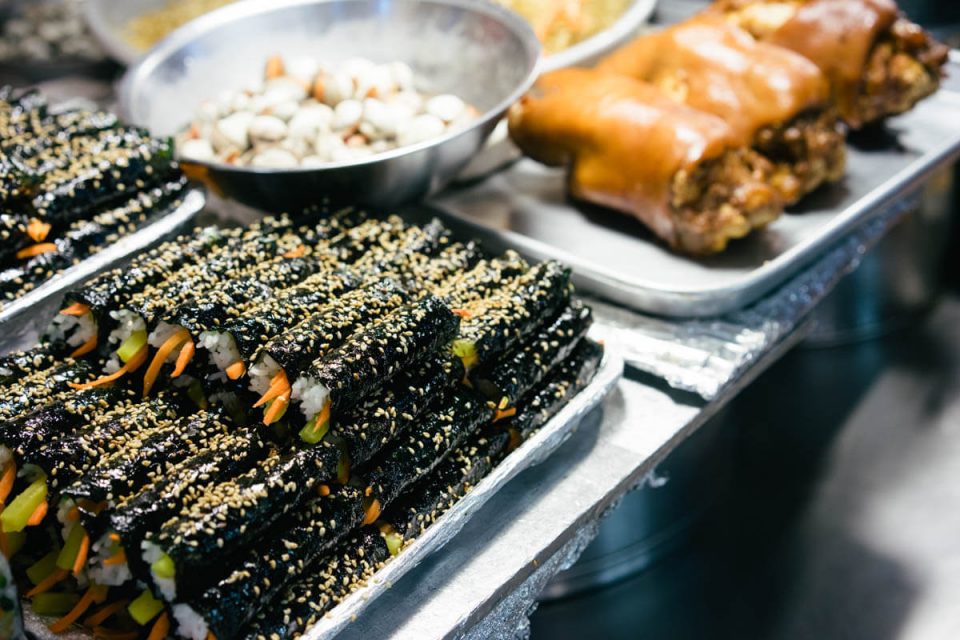

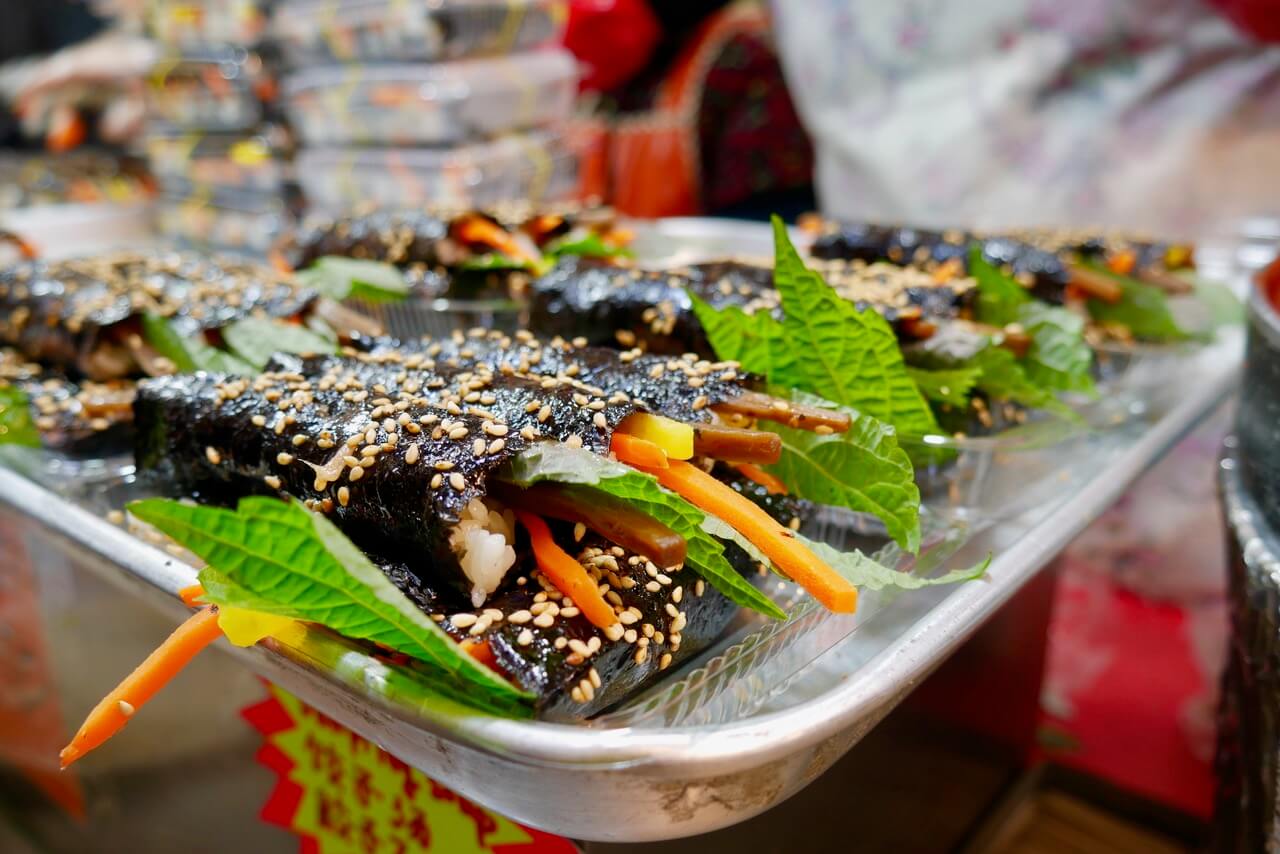
Tteokbokki (Spicy rice cakes): So famous, the tteokbokki here is covered in a bright red color on the tray with a very attractive spicy sauce.
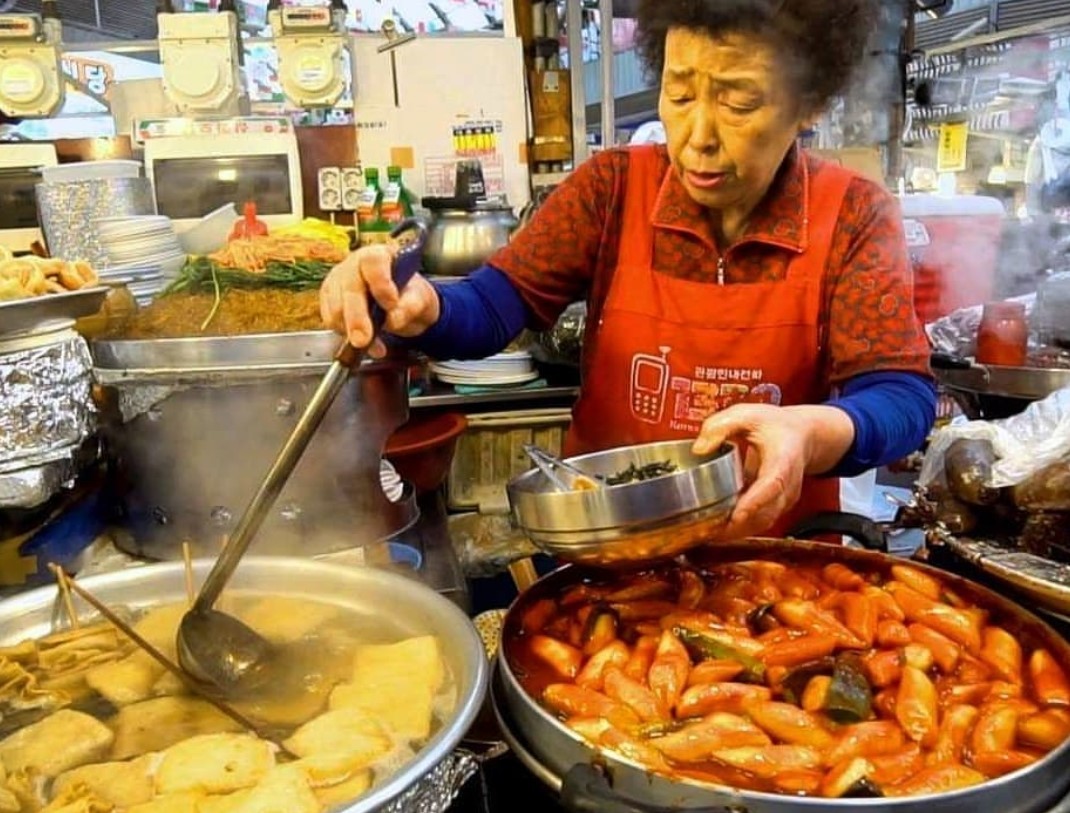
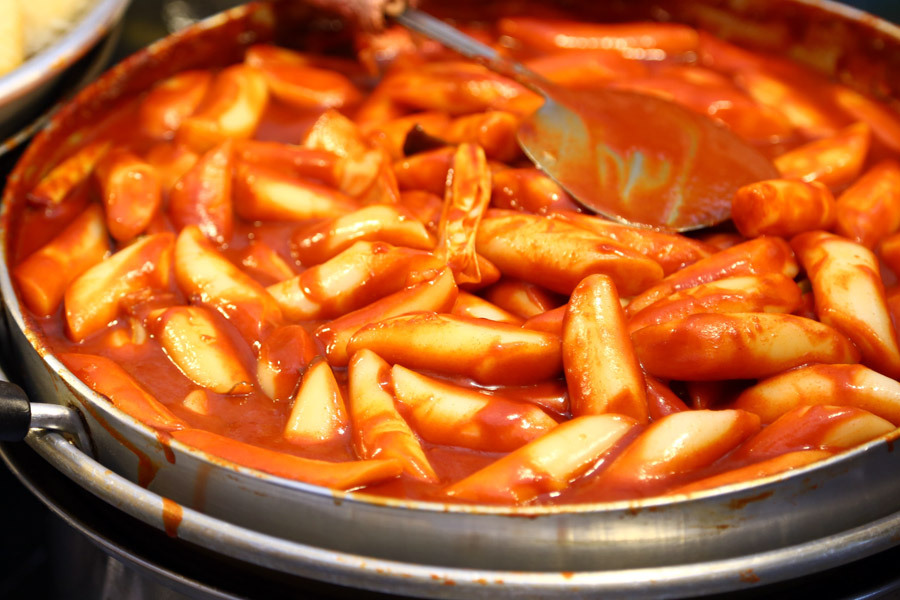
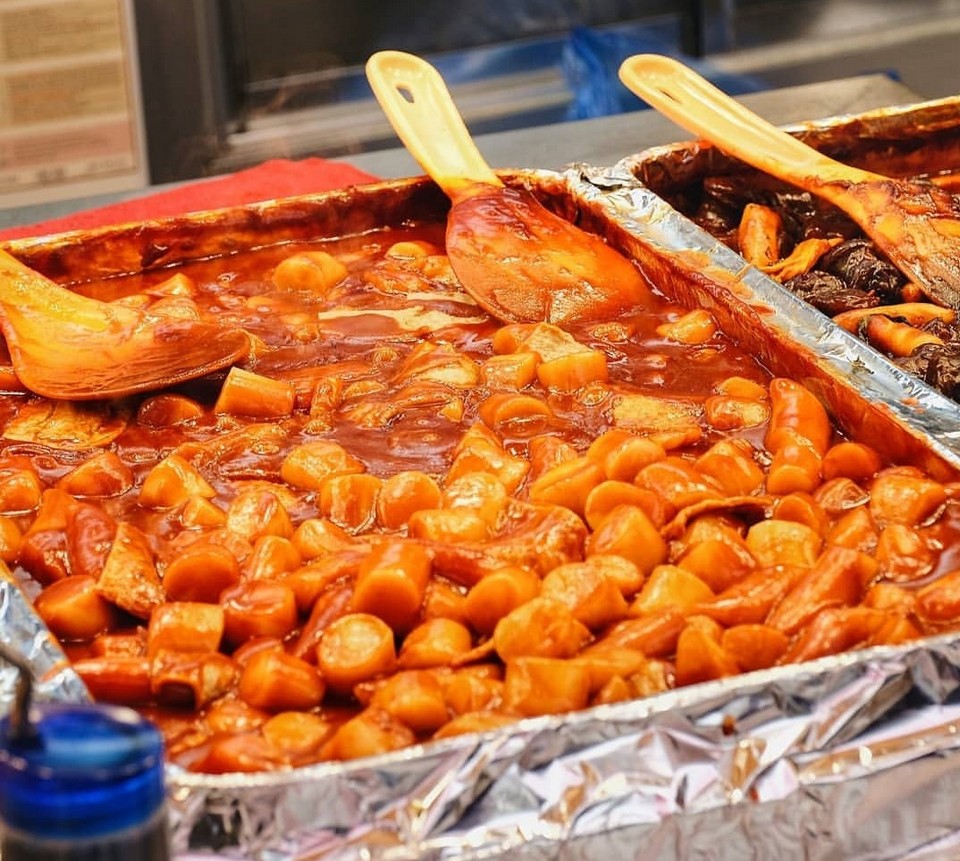
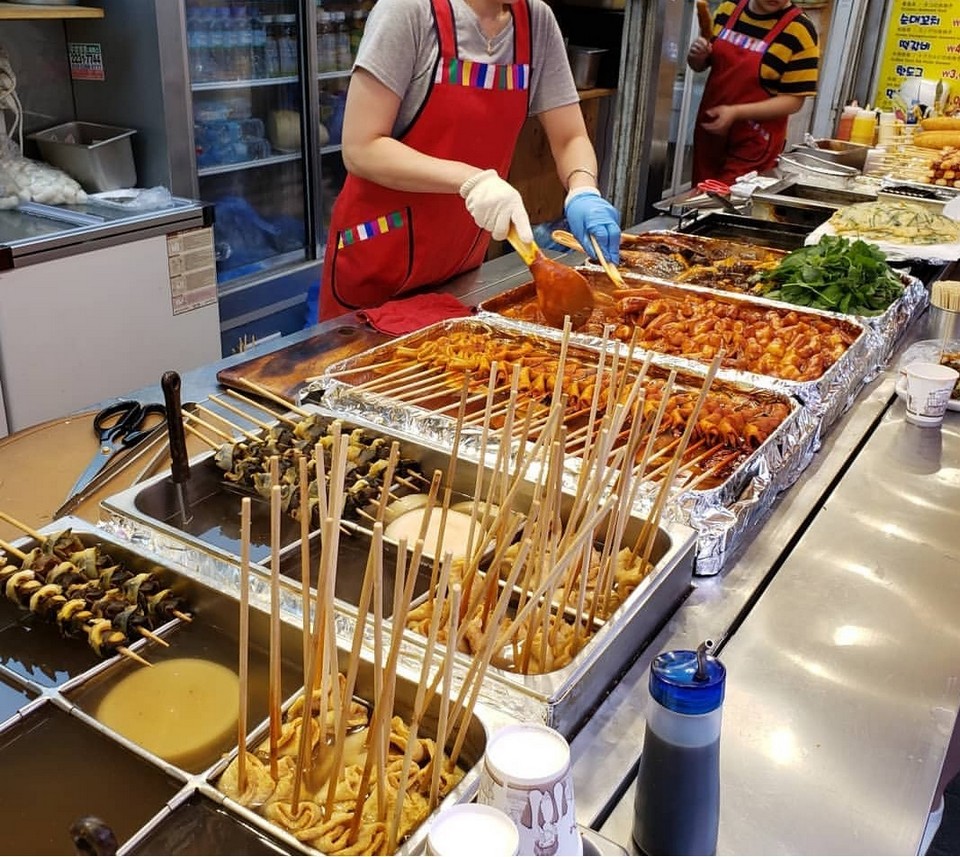


Soondae (Blood sausages): A dish similar to Vietnamese blood sausages, but of course when you eat it, it will be different. This Soondae dish is stuffed not only with blood, but also a lot of noodles or sticky rice.
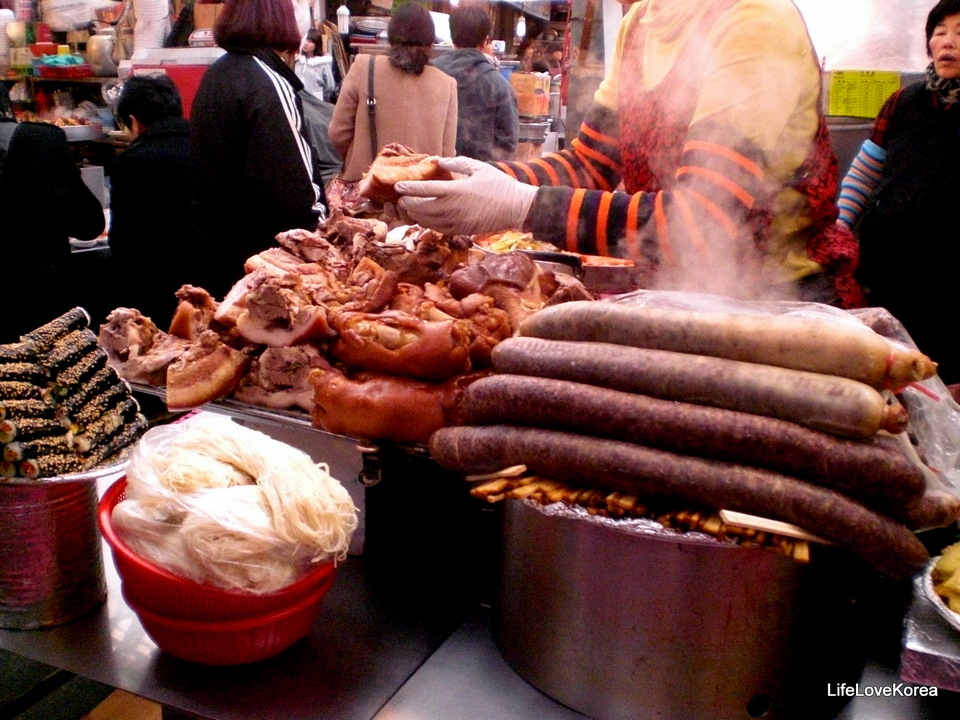
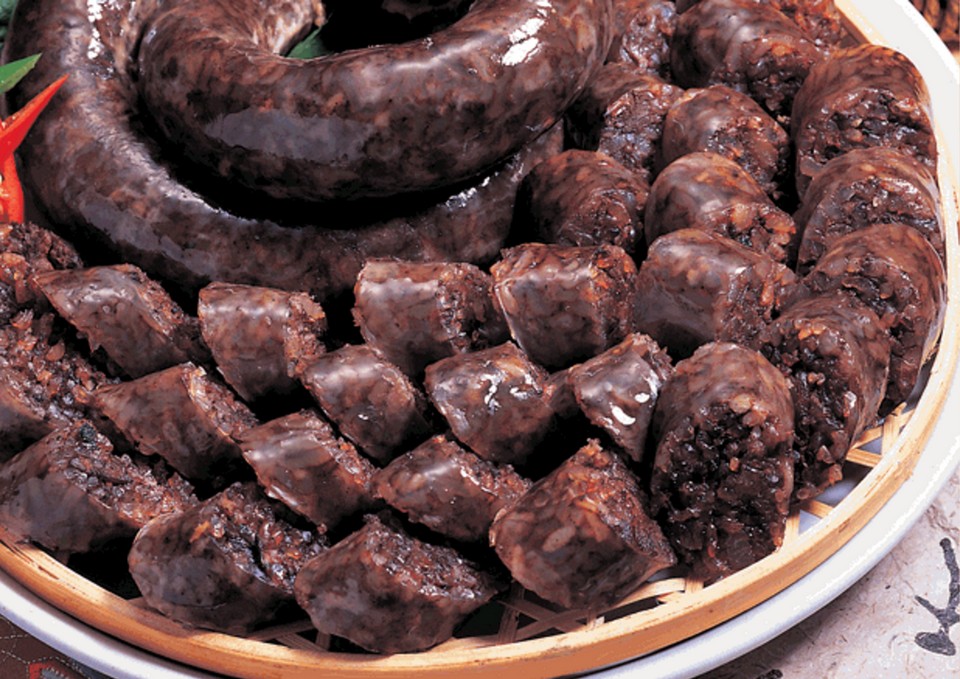
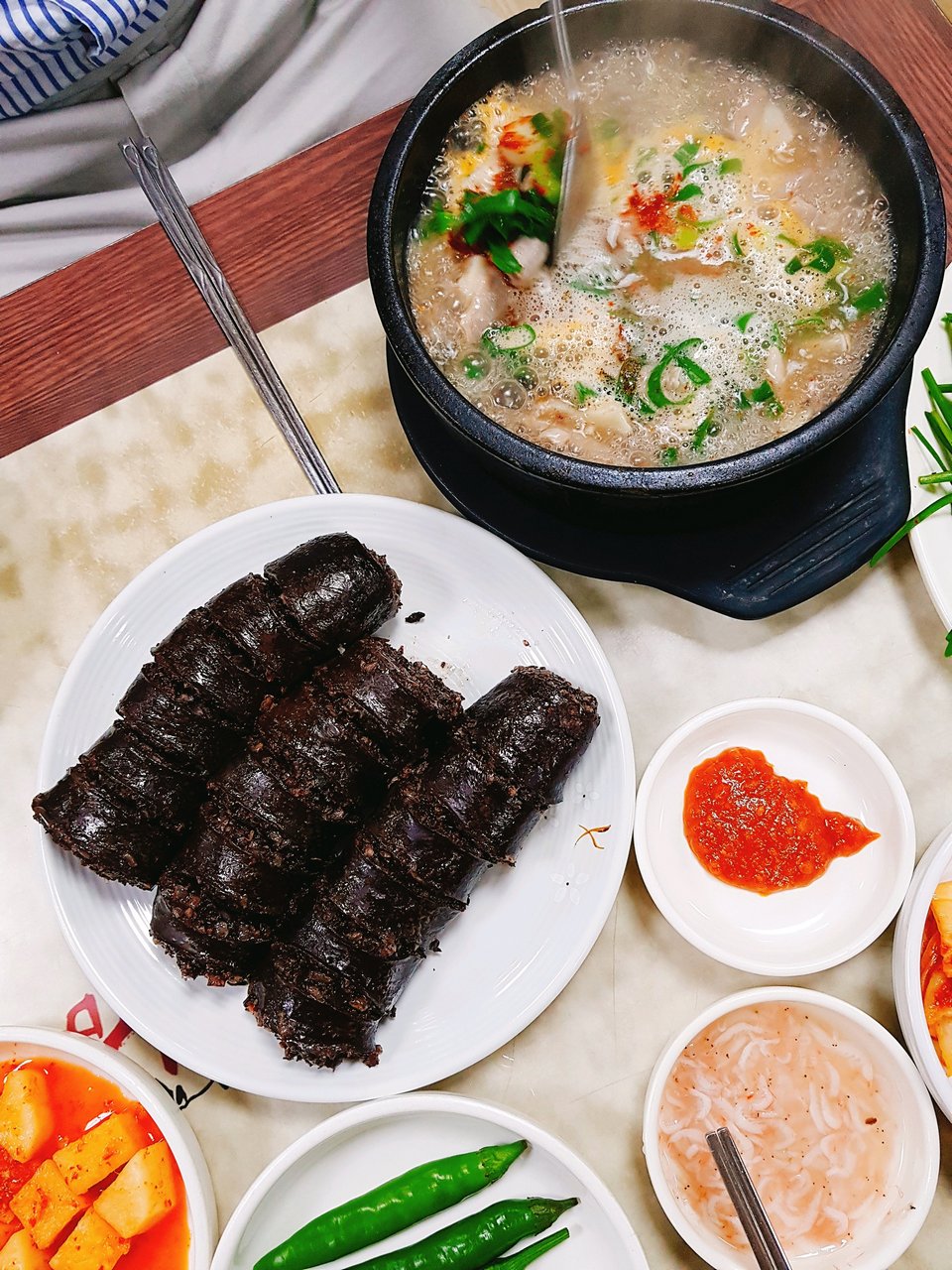

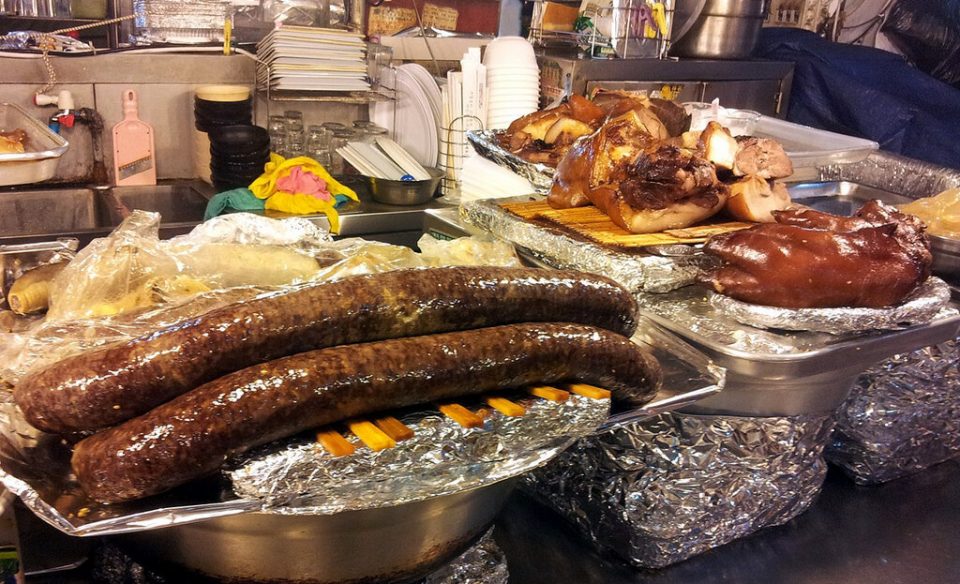
Mung Bean Pancakes (Bindaetteok): Bindaetteok is made by grinding soaked mung beans, adding vegetables and meat and pan-frying it into a round, and flat shape form.
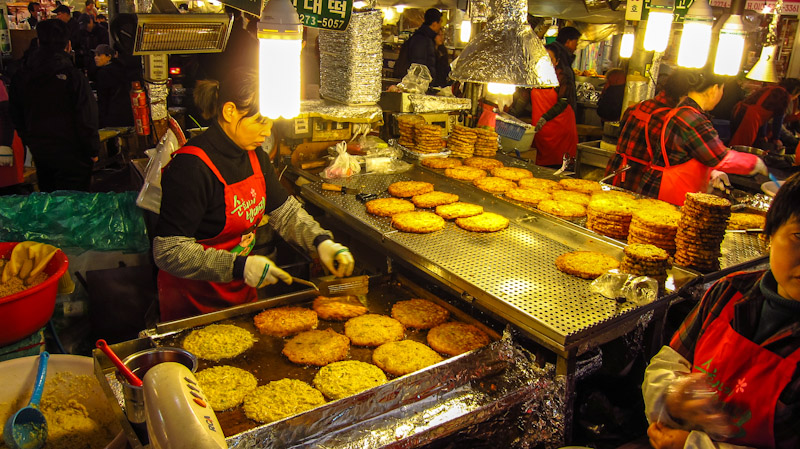
Fresh seafood: The seafood in the market seems is overwhelmed by the major dishes above, but not so less attractive. The seafood is mainly sashimi and the famous live octopus dish (sannakji), the live octpus is cut into small parts but it still wiggles on plate, sprinkle with sesame and chopped shallots, looks disgusting but delicious, the price is also not very cheap.
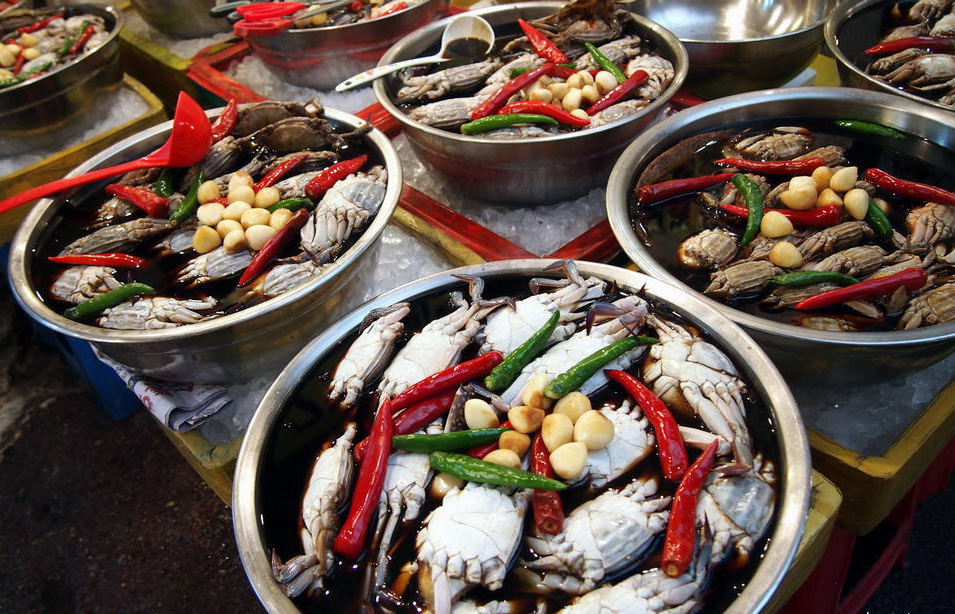
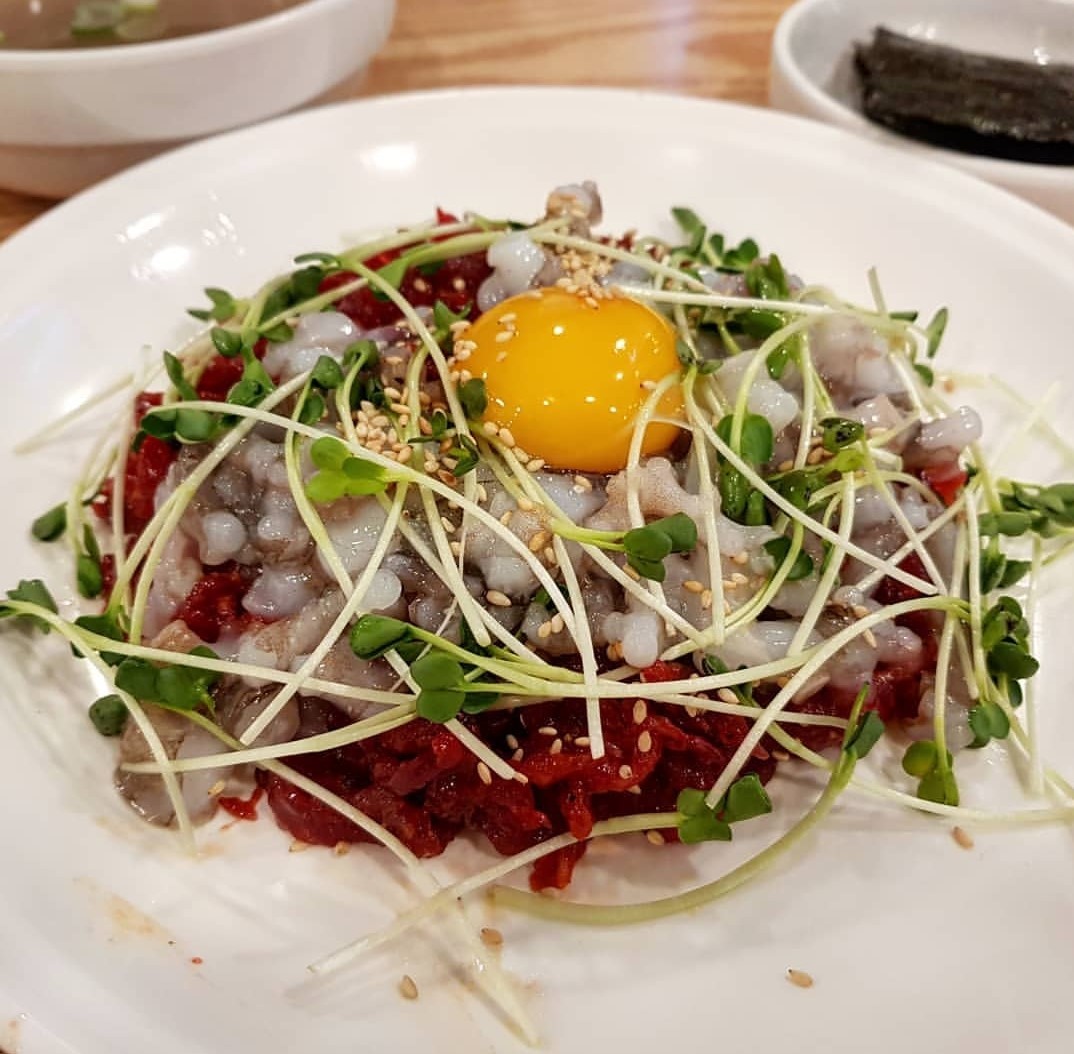
Gwangjang market blog: Experience a meal at Gwangjang market
I went to the market around midday on an empty stomach, and my initial impression was that everything was incredibly clean and well-organized. The restaurants are fairly similar to those in Vietnam, but the overall design is in the manner of central markets in Europe, with a huge dome spanning the entire market and a plethora of lights illuminating the inside.
The centre of the main entrance is a road filled with eateries, while the two sides are primarily stores selling fruit or drinks. Highlights continue to include fresh fruit and fruit juice, with prices ranging from 5000 KRW to 8000 KRW each cup. I walked around 2-3 times to take photographs, check what the market had, what cuisine the restaurants had, and what dish consumers frequently ordered so we knew what to eat. Guests here include both locals and international tourists, and every stall is packed.
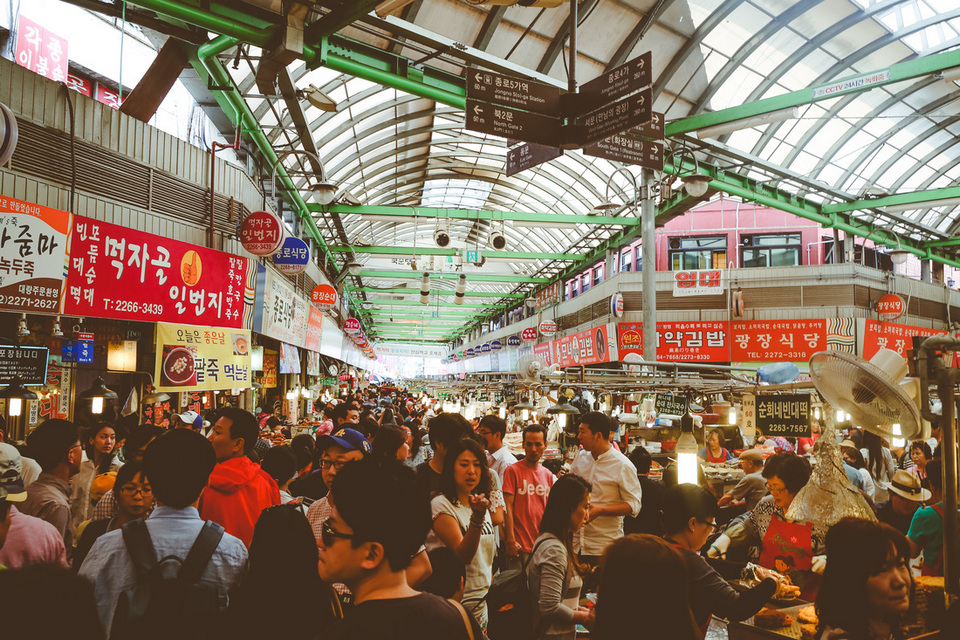
I selected a restaurant in the market that was not too dissimilar to the others. There was a group of students sitting here eating; after conversing with them, I discovered that they were Taiwanese friends who went to investigate Korean food; they had a native Korean girl who took them to eat, so they were familiar with the food here. They order a little portion of each meal, but they frequently share to dine together. I went alone that day, so ordering was tough; I don’t know Korean, and most of the store proprietors here don’t speak English.
I motioned to the lady owner, ordering a little portion of each item to sample. My dinner included Soondae with pork liver, Mantu (Korean dumplings), a dish of boiling pork belly, veggies, and kimchi,… however it appears that I was incorrect in thinking that the lady owner understood what I meant. She then gave me a dinner that could easily feed two people. OMG, seeing is becoming greasy, let alone eating, even though I was starving at the moment.
Despite being served with kimchi, the meal appears to be rather dry and chilly. Soondae is arguably the most greasy meal; there isn’t as much blood inside as the Vietnamese blood sausage, but it has a lot of noodles within, which isn’t appetizing at all. If eaten with kimchi and dipping sauce, the boiling pig belly is extremely tasty.
I made a concerted effort to consume the most of it, owing to a sense of guilt. The most startling aspect is that the entire dinner costs 22,000KRW. Perhaps the price is also the usual price, but for me, this dinner is too costly; I’m full because I ate a lot but not full because it’s good; nevertheless, I haven’t tried all of the items here. Gimbap and Tteokbokki, as well as other market street foods, will be tried in the future. Maybe it’s best if you simply eat a small amount of each of them, not too much.
Anyway, this is a very worthwhile dining place to experience for those traveling to Seoul.
